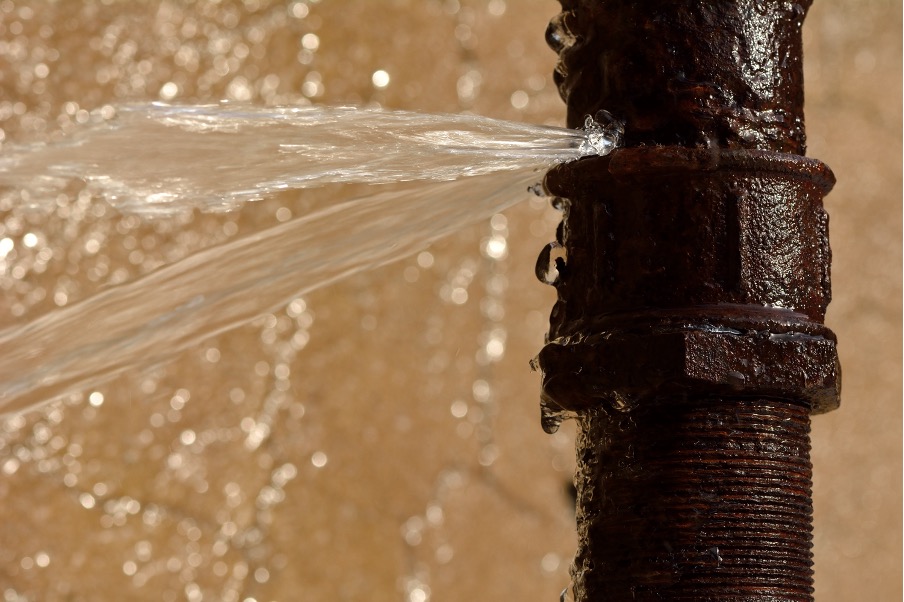We have stumbled upon this great article on Locating water leaks listed below on the web and decided it made perfect sense to write about it with you on this page.

Early discovery of dripping water lines can minimize a potential catastrophe. Some small water leakages might not be visible.
1. Take A Look At the Water Meter
Inspecting it is a guaranteed method that helps you discover leaks. If it relocates, that shows a fast-moving leakage. This implies you might have a slow-moving leak that can even be underground.
2. Examine Water Usage
Assess your water bills and track your water consumption. As the one paying it, you must observe if there are any type of discrepancies. If you identify sudden changes, regardless of your consumption being the same, it indicates that you have leaks in your plumbing system. Remember, your water bill should drop under the same array on a monthly basis. An unexpected spike in your costs indicates a fast-moving leak.
On the other hand, a consistent boost every month, despite the same practices, reveals you have a sluggish leakage that's also slowly escalating. Call a plumber to thoroughly inspect your home, particularly if you really feel a warm location on your floor with piping below.
3. Do a Food Coloring Examination
When it comes to water consumption, 30% comes from commodes. If the color somehow infiltrates your bowl throughout that time without flushing, there's a leak in between the container and also dish.
4. Asses Outside Lines
Don't fail to remember to examine your exterior water lines too. Ought to water seep out of the connection, you have a loose rubber gasket. One little leakage can waste loads of water and increase your water bill.
5. Evaluate the situation as well as check
Property owners need to make it a habit to check under the sink counters and also inside closets for any kind of bad odor or mold development. These 2 red flags suggest a leak so timely attention is needed. Doing regular inspections, even bi-annually, can conserve you from a significant issue.
Inspect for discolorations as well as deteriorating as a lot of pipelines as well as devices have a life expectancy. If you suspect dripping water lines in your plumbing system, do not wait for it to intensify.
Early discovery of leaking water lines can alleviate a prospective disaster. Some tiny water leaks might not be noticeable. Examining it is a surefire way that aids you discover leakages. One little leak can lose heaps of water and also surge your water bill.
If you believe leaking water lines in your plumbing system, don't wait for it to rise.
WARNING SIGNS OF WATER LEAKAGE BEHIND THE WALL
PERSISTENT MUSTY ODORS
As water slowly drips from a leaky pipe inside the wall, flooring and sheetrock stay damp and develop an odor similar to wet cardboard. It generates a musty smell that can help you find hidden leaks.
MOLD IN UNUSUAL AREAS
Mold usually grows in wet areas like kitchens, baths and laundry rooms. If you spot the stuff on walls or baseboards in other rooms of the house, it’s a good indicator of undetected water leaks.
STAINS THAT GROW
When mold thrives around a leaky pipe, it sometimes takes hold on the inside surface of the affected wall. A growing stain on otherwise clean sheetrock is often your sign of a hidden plumbing problem.
PEELING OR BUBBLING WALLPAPER / PAINT
This clue is easy to miss in rooms that don’t get much use. When you see wallpaper separating along seams or paint bubbling or flaking off the wall, blame sheetrock that stays wet because of an undetected leak.
BUCKLED CEILINGS AND STAINED FLOORS
If ceilings or floors in bathrooms, kitchens or laundry areas develop structural problems, don’t rule out constant damp inside the walls. Wet sheetrock can affect adjacent framing, flooring and ceilings.
https://www.servicemasterbyzaba.com/blog/how-to-detect-water-leakage-in-walls/

I'm very interested in Detecting hidden plumbing leaks and I really hope you enjoyed reading our post. Kindly take the time to distribute this blog if you enjoyed reading it. Thanks so much for taking the time to read it.